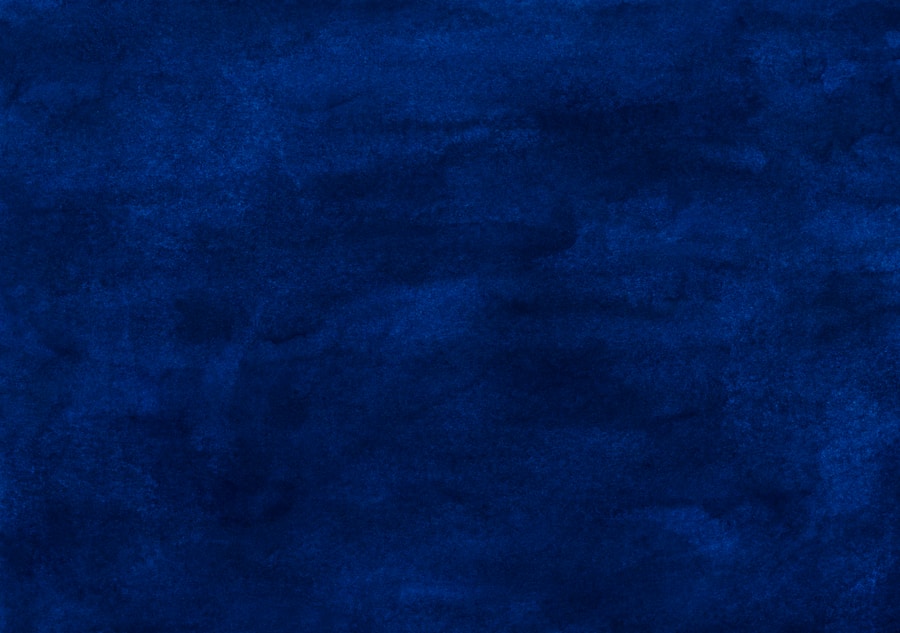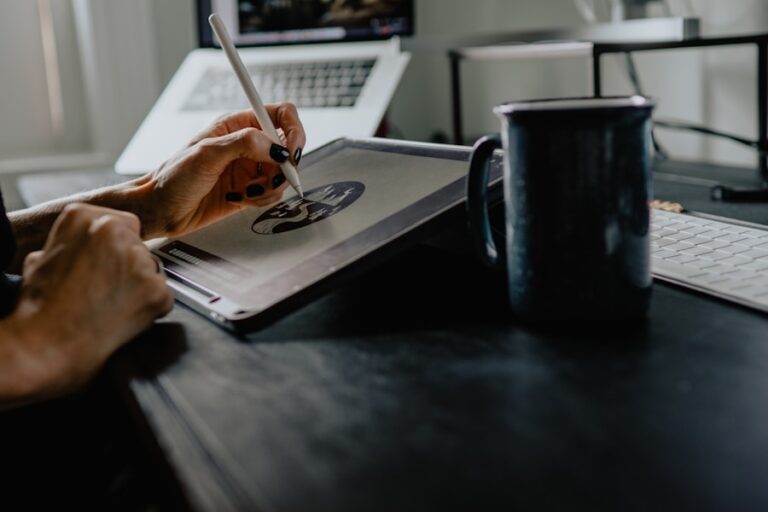Unleash Your Creativity: How to Get Started with Digital Art as a Hobby
Digital art is a form of artistic expression that utilizes digital technology as a medium. Unlike traditional art, which involves physical materials such as paint, canvas, and brushes, digital art is created using electronic devices such as computers, tablets, and graphic design software. This allows artists to manipulate images and create visual compositions using digital tools and techniques. Digital art can take many forms, including digital painting, photo manipulation, 3D modeling, and animation. One of the key differences between digital art and traditional art is the level of control and precision that digital tools offer. With digital art, artists can easily undo mistakes, experiment with different effects, and make precise adjustments to their work. This level of flexibility and control can be both empowering and challenging for artists, as it requires a different set of skills and techniques compared to traditional art.
Digital art also offers unique opportunities for collaboration and interactivity. With the rise of digital platforms and social media, artists can easily share their work with a global audience and connect with other artists and enthusiasts. This has led to the emergence of online communities and digital art collectives, where artists can exchange ideas, collaborate on projects, and showcase their work to a wider audience. In addition, digital art can be easily reproduced and distributed in various formats, making it accessible to a larger audience compared to traditional art. Overall, digital art represents a new frontier in artistic expression, offering endless possibilities for creativity and innovation.
Choosing the Right Tools: Exploring Digital Art Software and Hardware Options
When it comes to creating digital art, having the right tools is essential for achieving the desired results. There are a wide variety of software and hardware options available for digital artists, each with its own unique features and capabilities. For digital painting and illustration, popular software options include Adobe Photoshop, Corel Painter, and Procreate. These programs offer a range of brushes, textures, and effects that allow artists to create realistic and expressive digital paintings. For 3D modeling and animation, software such as Autodesk Maya, Blender, and Cinema 4D are widely used by digital artists to create intricate 3D models and animations. In addition to software, having the right hardware is also crucial for creating digital art. Graphic tablets such as Wacom Intuos and Huion Kamvas are popular choices for digital artists, as they provide a natural drawing experience with pressure-sensitive stylus pens. For those who prefer a more portable option, tablets such as the iPad Pro and Microsoft Surface Pro offer powerful tools for creating digital art on the go.
In recent years, there has been a surge in the development of virtual reality (VR) and augmented reality (AR) tools for digital art creation. These technologies allow artists to immerse themselves in a virtual environment and create interactive artworks that can be experienced in 3D space. With the rapid advancement of digital technology, the possibilities for creating digital art are constantly expanding, offering artists new ways to express their creativity.
Building a Foundation: Learning the Basics of Digital Art Techniques and Styles
As with any form of art, mastering the basics is essential for creating compelling digital artworks. Understanding fundamental techniques such as composition, color theory, and perspective is crucial for creating visually engaging digital art. In addition, learning how to use digital tools such as layers, masks, and blending modes is essential for achieving professional-looking results. Many online resources offer tutorials and courses that cover these fundamental skills, providing aspiring digital artists with the knowledge they need to get started.
In addition to technical skills, developing a personal style is an important aspect of digital art. Experimenting with different styles and techniques can help artists discover their unique voice and artistic vision. Whether it’s creating hyper-realistic digital paintings or abstract 3D sculptures, finding a style that resonates with the artist’s personality and interests is key to creating meaningful and impactful artworks. By exploring different styles and techniques, artists can expand their creative horizons and develop a diverse portfolio of work.
Finding Inspiration: Exploring Different Sources for Creative Ideas and Concepts
Inspiration is a crucial element in the creative process, driving artists to explore new ideas and concepts in their work. For digital artists, finding inspiration can come from a variety of sources, including nature, technology, pop culture, and personal experiences. Observing the world around them and paying attention to details can spark new ideas for digital artworks. Whether it’s capturing the beauty of a natural landscape or reimagining familiar objects in a futuristic setting, drawing inspiration from real-life experiences can add depth and authenticity to digital artworks.
In addition to real-world inspiration, digital artists can also draw ideas from the vast world of online content. Social media platforms such as Instagram, Pinterest, and Behance are treasure troves of creative inspiration, showcasing a wide range of digital artworks from artists around the world. By following other artists and exploring different genres and styles, digital artists can stay informed about current trends and find fresh ideas for their own work. Furthermore, engaging with online communities and participating in creative challenges can provide valuable feedback and encouragement for artists seeking inspiration.
Developing Your Skills: Practicing and Experimenting with Different Digital Art Techniques
Like any skill, mastering digital art requires practice and dedication. By regularly practicing different techniques and experimenting with new tools, artists can refine their skills and expand their creative abilities. Setting aside dedicated time for creating digital art can help artists stay motivated and focused on their artistic goals. Whether it’s sketching daily doodles or working on larger projects, consistent practice is key to improving as a digital artist.
Experimentation is also an important part of skill development in digital art. Trying out new software features, exploring different styles, and pushing the boundaries of traditional techniques can lead to exciting breakthroughs in artistic expression. Embracing a spirit of curiosity and openness to new ideas can lead to unexpected discoveries and innovative approaches to creating digital art. By stepping outside of their comfort zone and taking risks in their work, artists can uncover hidden talents and develop a unique artistic voice.
Sharing Your Work: Building an Online Presence and Connecting with the Digital Art Community
In today’s digital age, sharing artwork online has become an essential part of being a successful artist. Building an online presence through social media platforms, personal websites, and online galleries allows artists to showcase their work to a global audience. By sharing their creative process, behind-the-scenes insights, and finished artworks, artists can connect with fans and fellow creators who share their passion for digital art.
Engaging with the digital art community is also important for growing as an artist. Participating in online forums, attending virtual events, and collaborating with other artists can provide valuable feedback and support for artists seeking to improve their skills. By sharing knowledge and experiences with others in the community, artists can gain new perspectives on their work and find inspiration from diverse sources.
Making it a Habit: Incorporating Digital Art into Your Daily Routine and Finding Joy in the Process
Incorporating digital art into one’s daily routine is essential for maintaining a consistent creative practice. By setting aside dedicated time for creating artwork each day, artists can develop a sense of discipline and focus that will help them grow as creators. Whether it’s dedicating an hour each morning to sketching or working on larger projects during weekends, establishing a regular creative routine can lead to meaningful progress in one’s artistic journey.
Finding joy in the process of creating digital art is also crucial for sustaining long-term motivation. Embracing the playful nature of experimentation, celebrating small victories, and staying open to new ideas can help artists stay inspired and engaged with their work. By approaching each project with a sense of curiosity and wonder, artists can infuse their artwork with a sense of joy that will resonate with viewers.
In conclusion, digital art offers endless possibilities for creative expression through the use of technology as a medium. By understanding the unique characteristics of digital art compared to traditional art forms, choosing the right tools for creating digital artwork, building a strong foundation in fundamental techniques and styles, finding inspiration from various sources, developing skills through practice and experimentation, sharing work online to connect with the community, making it a habit to incorporate digital art into daily routines while finding joy in the process – aspiring digital artists can embark on an exciting journey of artistic exploration and growth. With dedication, passion, and an open mind towards new ideas – anyone can become a proficient digital artist capable of creating impactful works that resonate with audiences around the world.





